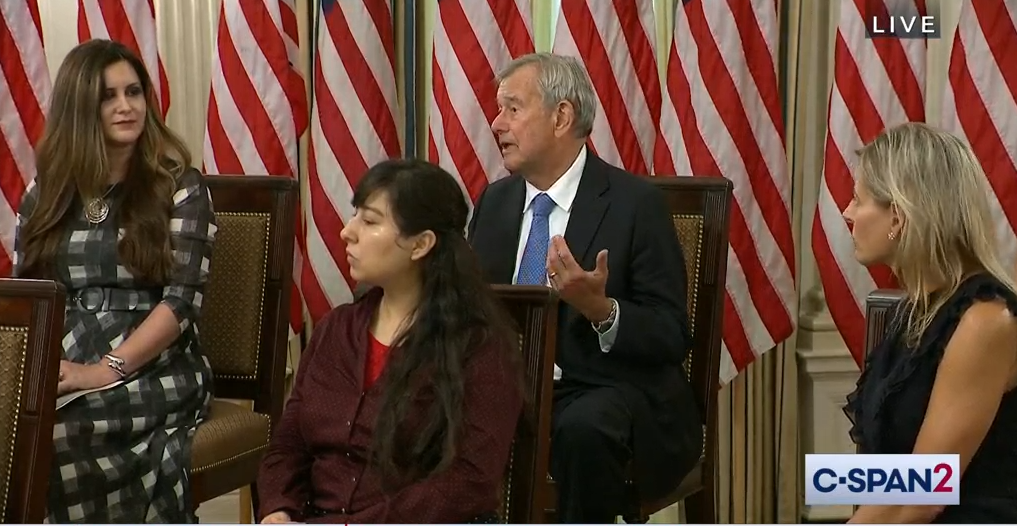
What would a President Biden do on education? Unlike the previous Democratic presidential nominee, Hillary Clinton, Joe Biden has little in terms of a record or legacy that would point to an answer. This is remarkable for someone who has been in politics for almost his entire adult life, but as both a U.S. senator and as vice president, Biden focused on other issues including criminal justice, violence against women, and foreign policy. Our best indicators are therefore contained in Biden’s education platform.
Biden would be succeeding a President who has no big education policy wins and no enduring education policy legacy. This stands in contrast to all of Trump’s recent predecessors. Barack Obama pushed through the largest increase in education funding in history via the American Reinvestment and Recovery Act, launched major education policy reforms under his signature Race to the Top initiative, and signed into law the sweeping Every Student Succeeds Act, or ESSA. George W. Bush enacted the game-changing No Child Left Behind Act which, despite scaling back under ESSA, remains as the driver of state and local disaggregation of data and an evidence-based focus on closing gaps between students from historically disadvantaged groups and their more advantaged peers. Bill Clinton, via the Goals 2000 and Improving America’s Schools Acts, ushered in the basic framework of assessments and accountability that are still central to federal education law. Clinton also promoted public school choice, including the creation of the federal Charter School Program.
It remains to be seen whether Biden will attain a level of accomplishment on par with Trump’s predecessors. He proposes significant investments in education that could result in big change. So far, though, he’s not attached policy goals commensurate with his aspirations for increased funding.
Education Funding
Covid-19. The single biggest defining characteristic of Biden’s education policy agenda is increased spending. Moreover, the political landscape he’d face post-election would be one where funding decisions would loom large. At this writing, Congress and the White House have not reached a deal on a “Phase 4” Covid-19 relief bill. If that deal fails to materialize this year, as seems likely, it would be the first order of business for a newly elected Biden.
The likely starting point in negotiations would be the House Democrats’ $3 trillion Health and Economic Recovery Omnibus Emergency Solutions or “HEROES” Act which passed the House on a largely party-line vote back in May. HEROES would channel funds to education in a few different ways. First, it would create a $90 billion “state fiscal stabilization fund” for both higher and K-12 education, 65% (or about $58 billion) of which would go to states and local school districts. Second, the bill would provide $1 billion to state and local governments to make up for revenue losses stemming from the pandemic, some of which could be channeled to education. Third, the HEROES Act would provide relief to student borrowers including up to $10,000 in federal loan forgiveness. Fourth, the bill would provide about $5.5 billion to close the “digital divide,” including $1.5 billion for the federal E-Rate Program to provide broadband access to students and families via schools and libraries to support distance learning.
The prospects for a HEROES-like bill— as well as for, more broadly, Biden’s highly ambitious education spending proposals—will hinge on whether Democrats not only win the White House but also regain control of the U.S. Senate. Senate Republicans were the major roadblock to a Covid-relief package this fall, driven mostly by budget conservatism. Moreover, even if Democrats achieve a Senate majority, they may need to eliminate the filibuster to advance their agenda, a “nuclear option” that even some moderate Democratic members say they will consider if Republicans obstruct their legislative agenda.
If Republicans maintain control of the Senate, all bets are off for a package that contains anywhere close to the $3 trillion contained in HEROES. Control of the Senate may come down to a run-off race in Georgia that will take place on January 3, so a Covid-19 package and other education spending legislation could remain in limbo for 2 months or more past the November 3 election.
Biden’s Education Funding Proposals. As with Covid-19 relief, the foundation of Biden’s education plan is increased spending across a number of different areas. His most specific funding proposal is to triple funding for Title I, the flagship federal K-12 education program that goes to about 70% of all U.S. public schools. That would be an increase to about $48 billion from the current $16 billion. Biden would “prioritize” the use of Title I to increase teacher salaries—how exactly this “priority” would be legislated is as yet unclear—but would also allow funds to serve other purposes. Biden also proposes increased spending for:
- Expanding and improving teacher training and professional development;
- Providing debt relief for teachers and other educators by fixing and simplifying the Public Service Loan Forgiveness Program;
- Hiring additional school support staff such as psychologists, counselors, nurses, social workers, and other health professionals;
- Investing in school infrastructure to address health risks, build energy efficient schools, and develop innovative educational technology;
- Recruiting teachers of color, including through dual-enrollment classes and “grow your own” approaches that give aspirants a head start toward completing teacher preparation programs, creating “career ladders” to provide paraprofessionals with a path toward earning their teaching certificate, and supporting efforts by historically black colleges and universities and minority-serving institutions to recruit and prepare teachers.
These and other investments would be a welcome change for many stakeholders (and progressives like me), a 180 degree turn from Donald Trump, who consistently has proposed cuts in federal education funding and who has presided over four years of fairly nominal budgetary increases. But what remains to be seen is whether Biden will leverage the big money he intends to invest in the service of transformational changes in education policy. For example:
- Biden has a comprehensive Covid-19 response. But what if he set a goal that every American household have access to broadband, which has become essential not just for education but for everything from health care to banking to supporting Black-owned businesses?
- Biden’s Covid-19 plan is silent on the fact that the ability of higher income parents to hire private tutors and create private “pandemic pods” to complement distance-learning in public schools is exacerbating opportunity gaps. But what if he used Covid relief funds to establish a national effort for all parents to access tutoring and small group instructional approaches—run by school districts, colleges and universities, or community-based non-profit organizations—that tap currently underutilized human capital and create a streamlined career path to teaching especially for aspirants of color?
- Biden has proposed tripling funding for the federal Title I funding and prioritizing increased teacher pay in use of those funds. But what if Biden set a goal of using either Title I funds or a new categorical grant program to provide every teacher in the U.S. a $5,000 annual salary increase and also give teachers in the top 25%of our highest poverty schools an extra $5,000 per year along with every teacher in a shortage area like STEM, special education, and bilingual education? These compensation polices would help recruit and retain a more skilled and diverse cadre of current and prospective educators in the schools and subjects where they are most needed.
- Biden has proposed improving teacher training and professional development. But what if he set of goal of ensuring that everyeducator gets a cost-free, one-year internship or residency before officially becoming a teacher, where they would get adequate training in areas like evidence-based reading instruction and classroom management that so many current teachers tell us they wished they’d had?
- Biden has proposed increased investments in infrastructure. But what if he set a goal of completely eliminating lead and other contaminants in drinking water— in and outside of school—that cause brain damage, cancer, and other serious health outcomes?
To be clear, there are many areas not covered here where Biden could make his mark. Furthermore, Biden has made troubling comments on key reform issues like assessments and accountability and public charter schools that present serious challenges for advocates and signal some serious headwinds for reform. Those are subjects for a separate discussion.
The issues discussed here are the biggest potential upsides of Biden’s education policy platform and present its most glaring unanswered questions. By setting ambitious goals like these, Biden could help ensure that the investments he would like to make have a significant and enduring impact on promoting equity, expanding opportunities to learn, and increasing the odds of student success.
Charles Barone is vice president of K-12 policy at Democrats for Education Reform.





